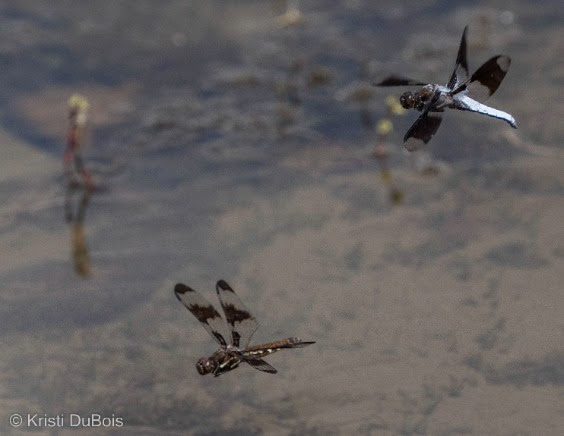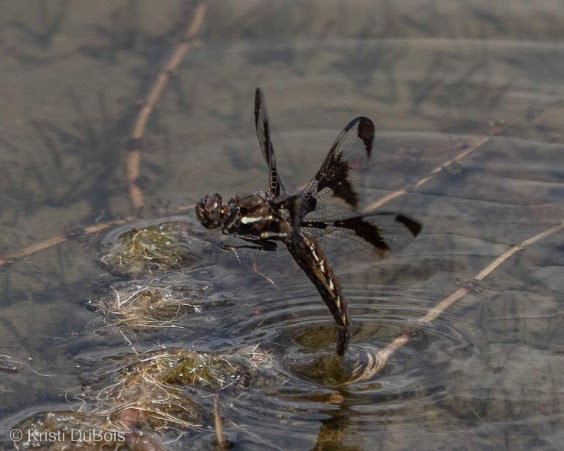Kristi shares, “The female whitetail was laying eggs in some vegetation just under the surface. One of the pictures shows the male above her, guarding her. The dragonflies were putting on quite a show that day!” Each tap of her abdomen will release 25-50 eggs.
If you look closely at the wings of the male and female you will notice that they have different wing patterns. The abdomens look similar, but as males age, they develop a thick, waxy coating on their abdomens, lending them a bluish-white appearance. Males of many Skimmer species (family Libellulidae) develop this. Check out the identification section on this page to see examples of this progression.
Common whitetails, as well as other skimmers, sit on a perch and wait for insect prey to fly past. Once spotted, they sally out in pursuit, often returning to the same perch. Look for these effective predators along muddy-bottomed streams, ponds, and lakes all summer long. If your summer travel plans take you to one of the other contiguous states, south to Mexico, or north to a handful of Canadian provinces, you might see them there too!
ID tip: Kristi included an important ID tip along with her observation. “I had to look up the female, thinking it was a 12 spotted skimmer, but discovered it was indeed a female whitetail. They look very similar, but the 12-spotted females have a stripe down the abdomen, not a series of spots. So this female is a common whitetail.”
Size: Adults average 1.7 inches long
Photos by: Kristi DuBois on 7/22/22 near Clinton, MT


